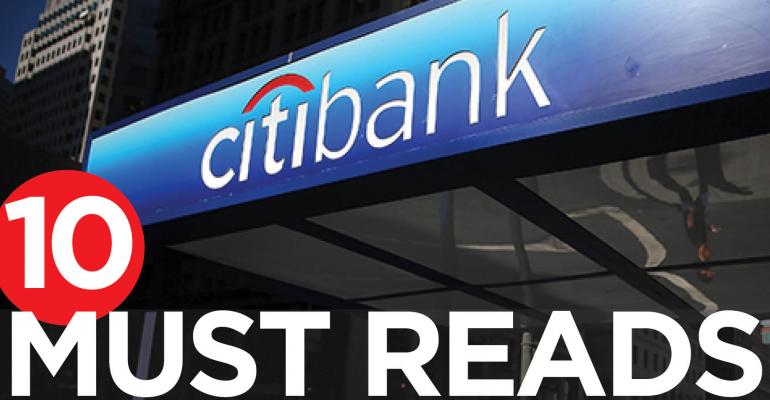- Citigroup, Goldman Offload $1.8 Billion of BioMed-Buyout Debt “Citigroup Inc. and Goldman Sachs Group Inc. pulled off a sale of about $1.8 billion in bonds linked to Blackstone Group LP’s acquisition of BioMed Realty Trust Inc., clearing their books of loans that have been parked there for months. Buyers snapped up the offering, enabling the banks to extract better pricing terms from investors than originally planned. The strong demand marked a change in tone from the dark mood that has hung over the commercial mortgage-backed securities market since the start of the year.” (Bloomberg)
- Biotech Startup and Equipment Sales Company Take Space at Industry City "Suneris, a biotech company which created VetiGel blood-stopping agent, and AbelCine, an audio-visual store which holds related workshops and events, have both committed to leases at Sunset Park’s Industry City, as Crain’s New York Business first reported. Sunrise signed a three-year deal for 10,000 square feet at IC Building 6 at 86 34th Street for manufacturing medical products, according to a spokeswoman for IC, with an additional 15,000 square feet under negotiation. The asking rent was between $15 and $35 per square foot, she noted. The tenant will relocate to IC this summer from 2,500 square feet in Park Slope and 2,000 square feet of temporary space in IC." (Commercial Observer)
- Block 37 finished? Really? “Over the past decade, they have built a 16-story office tower, a 275,000-square-foot shopping center and an unused $200-million-plus subway station on the block just west of Macy's. Now, they are wrapping up the last piece of the big mixed-use project: Marquee at Block 37, a 690-unit apartment tower at 25 W. Randolph St. set to open June 1. Block 37 was supposed to be a story of urban renewal, a key step in the rebirth of a seedy section of the North Loop into a flourishing neighborhood of office workers, shoppers, high-rise dwellers and tourists. The North Loop has become that, but Block 37, which sat vacant for 15 years, is also a story of big dreams unfulfilled, bungling city government and a global financial crisis that crippled its developer.” (Crain's Chicago Business)
- Tech-Heavy CRE Markets at Risk of Slowdown "The tech boom since end of the recession has been manna for a number of commercial real estate markets, but can it last in the face of recent jitters about the future of the economy and softness in some tech sectors? According to a recent report by Fitch Ratings, tech-oriented U.S. CRE market fundamentals have cooled, but are unlikely to collapse. More specifically, office and multifamily owners are most at risk from lower tech-tenant demand in markets such as San Francisco, Silicon Valley, Seattle, New York and Los Angeles." (Commercial Property Executive)
- Development near Wrigley Field finally ready to start "After nine years of delays, work is finally set to begin on a $150 million-plus residential and retail development across from Wrigley Field. A venture of M&R Development and Bucksbaum Retail Properties yesterday bought a row of buildings on Clark Street that will be demolished for the project called Addison & Clark, M&R President Tony Rossi said. The venture also secured construction financing, he added." (Crain's Chicago Business)
- US commercial real estate sales sink in February “U.S. commercial real estate sales took a dive last month in what may be the clearest sign that six years of growth is leveling off. In February, $25.1 billion worth of commercial property was sold compared with $47.3 billion in February 2015, according to Real Capital Analytics. Sales were $46.2 billion in January, the Wall Street Journal reported.” (The Real Deal)
- Coming Minimum Wage Hikes to Reverberate, Burden Entire U.S. Logistics Ecosystem “According to a new report by CBRE Group, rising minimum-wage levels across the U.S. stand to impose additional cost burdens on industrial-building occupiers, especially in labor-intensive, e-commerce fulfillment centers. CBRE calculates that a $1 increase in average wages amounts to a $1 million rise in total annual labor spend for a 500-employee facility. Viewed another way, that level of added cost is equivalent to an increase in annual rent of $2.08 per square foot on a 500,000-square-foot industrial building, according to CBRE's calculations. That's a 37 percent rise from the average annual U.S. industrial rent of $5.65 per square foot per year.” (World Property Journal)
- Baby Boomers, Downsizing for Retirement, Create Niche Real Estate Market “While the majority of millennials and GenXers dream of living in bigger homes (unless they want to squeeze into micro units of 350 square feet or less), the 55-and-over-crowd is divided these days between those wanting more space and those wanting to downsize, studies show. Baby boomers are just as likely to buy a bigger home, and take out a mortgage in retirement to do so, as they are to downsize to a condo in Florida.” (Curbed)
- Commercial real estate activity continues to soar in Omaha market It’s an unusual word for Omaha’s CRE market. Kerrigan, a vice president specializing in office, land and investment for Omaha’s Investors Realty, said that brokers here have typically used “stable” and “steady” to describe the commercial activity in the Omaha market. But that changed last year. In 2015, the Omaha commercial real estate market saw about 1 million square feet of lease deals of more than 1,000 square feet. The market also absorbed 340,000 square feet last year. (RE Journals)
- Investcorp Snaps Up Five More Multifamily Properties “In two separate transactions, Investcorp’s U.S.-based real estate arm has acquired residential properties: three in Boca Raton, Fla., and two in metro Minneapolis, for a total of about $220 million. The Florida properties are comprised of student housing properties, while the Minnesota properties are standard apartment communities.” (Multi-Housing News)
0 comments
Hide comments

